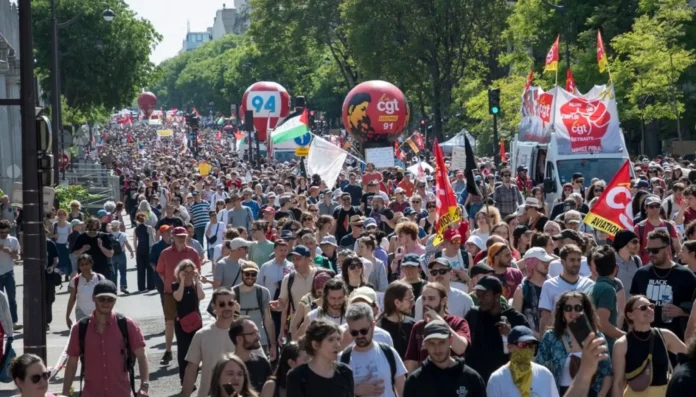
French unions have announced another nationwide strike and protest day on October 2, intensifying pressure on Prime Minister Sébastien Lecornu to abandon austerity measures proposed by his predecessor.
The announcement came after union leaders met with Lecornu on Wednesday, following mass demonstrations held on September 18. That protest drew hundreds of thousands of people across the country. Union leaders say their concerns remain unanswered.
Marylise Leon, head of the CFDT, France’s largest union, said Lecornu offered no concrete commitments. “The prime minister did not provide any clear answers to the workers’ demands, so for the unions, it’s a missed opportunity. It doesn’t add up,” she declared.
Sophie Binet of the CGT union echoed the frustration, calling the September protests a success but insisting the movement must escalate. “There was a big turnout on September 18, and we need to step it up again on October 2,” she said.
The timing presents a major challenge for Lecornu, who was appointed prime minister just over two weeks ago. At 39, he is President Emmanuel Macron’s fifth appointee in less than two years, underscoring the political instability surrounding the government.
So far, Lecornu has avoided public appearances, focusing instead on meetings with party leaders and union representatives. However, unions argue that his low-profile approach signals a lack of urgency in responding to social and economic discontent.
Lecornu inherits a daunting task: crafting a 2026 budget that addresses France’s swelling deficit while navigating a deeply divided parliament. France’s deficit last year was nearly twice the European Union’s 3% ceiling, a point of concern for both EU officials and investors.
His predecessor, François Bayrou, was forced out on September 8 after parliament rejected his proposal for a €44 billion austerity package. Lecornu has not yet clarified whether he intends to stick with or abandon Bayrou’s plan, leaving unions wary and markets uncertain.
Macron and Lecornu face mounting pressure from opposing directions. On one side, protesters and left-wing parties are mobilizing against spending cuts they argue will harm workers and public services. On the other, investors demand a credible plan to rein in the deficit.
With none of parliament’s three major blocs holding a majority, Lecornu must strike a delicate balance to secure support for his fiscal plans. The looming October 2 strike will test his ability to respond effectively to popular unrest while keeping financial markets calm.
For unions, the confrontation is clear: they see austerity as an unacceptable burden on workers. For Lecornu, the path forward remains uncertain as he struggles to assert authority in a fractured political landscape.